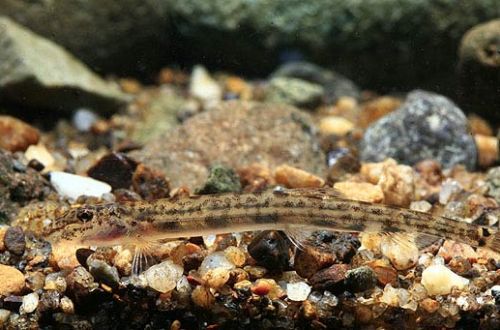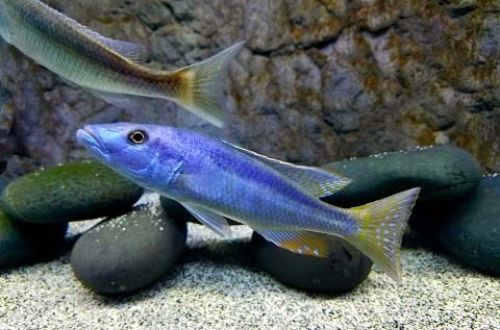
Acanthocobitis molobryo
The pygmy horsehead loach or Acanthocobitis molobrion, scientific name Acanthopsoides molobrion, belongs to the Cobitidae (Loach) family. The fish is a close relative of the well-known horsehead loach in the aquarium trade. Both belong to the genus Acantopsis and in nature inhabit the same water bodies.

Contents
Habitat
Comes from Southeast Asia. Inhabits the river systems of the island of Borneo (Kalimantan), as well as on the territory of Peninsular Malaysia. Occurs in flowing sections of rivers with clean clear water, substrates of sand and fine gravel.
Brief information:
- The volume of the aquarium – from 60 liters.
- Temperature – 20-24°C
- Value pH — 5.5–7.0
- Water hardness – soft (1-10 dGH)
- Substrate type – soft sandy
- Lighting – subdued
- Brackish water – no
- Water movement – moderate
- The size of the fish is about 5 cm.
- Nutrition – protein-rich food, sinking
- Temperament – peaceful
- Keeping in a group of 5-6 individuals
Description
The fish has a thin elongated body about 5 cm long. As the name implies, the head resembles the shape of a horse’s head – an elongated large mouth, eyes are located high on the crown. The coloring is a light yellow shade with a pattern of dark specks – ideal for becoming invisible against the background of sandy ground. Sexual dimorphism is weakly expressed. Males, unlike males, look larger and more massive.
Food
They feed by sifting soil particles with their mouths in search of small insects, larvae and crustaceans. In a home aquarium, protein-rich foods should be the basis of the diet, these can be dry sinking foods, as well as frozen or fresh brine shrimp, bloodworms, daphnia, etc.
The substrate is of great importance in the process of nutrition. It is important to use sandy bottom or fine gravel to avoid large particles getting stuck in the fish’s mouth.
Maintenance and care, arrangement of the aquarium
The optimal size of the aquarium for a group of 5-6 fish starts from 60 liters. In the design, as already mentioned, the focus is on the lower tier. The main element of the decor is soft ground. The presence of shelters, both natural, for example, snags, and artificial (decorative objects), is welcome. The presence of live aquatic plants is not glamorous, but species floating on the surface will serve as a good means of shading – Acanthocobitis molobryon prefers subdued lighting levels.
For long-term maintenance, it is necessary to ensure high water quality (absence of contamination) and not to allow deviations of the pH and dGH values from the permissible range. To this end, regular maintenance of the aquarium is carried out, in particular, replacing part of the water with fresh water and removing organic waste, as well as installing a filtration system. The latter should not only clean, but at the same time not cause excessive movement of water – the fish do not react well to the strong current that the filter can cause.
Behavior and Compatibility
The pygmy horsehead loach gets along well with relatives and with many other species. As neighbors, it is desirable to select fish that live mainly in the upper middle layers of the water in order to avoid possible competition at the bottom. Accordingly, any territorial species should be excluded.
Fish diseases
Finding the fish in a suitable habitat, getting them a balanced diet and free from external threats such as attacks from tankmates is the best guarantee against disease. The appearance of signs of illness can be a signal that there are problems in the content. Usually, bringing the habitat back to normal contributes to self-healing, but if the body of the fish has suffered too much, then medical treatment will be required. Read more about symptoms and treatments in the Aquarium Fish Diseases section.





